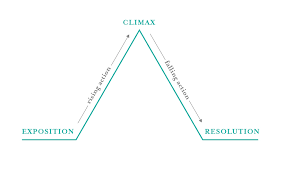Giving Data a Voice that People Can Understand As a Data Analyst
 Queen Carine
Queen Carine
Introduction
Data storytelling is essential for any data analyst in today's data-driven world. Raw numbers and graphs only go so far; to drive real impact, data needs a narrative that brings insights to life. Data storytelling bridges the gap between data and actionable insights, making complex information accessible and memorable. In this post, we'll explore core concepts to help you craft compelling data stories that resonate with your audience.
Why tell a story?
Research has proven that stories are more effective than any other form of communication when engaging people’s attention and communicating a message. Stories are far more memorable than just the facts and figures alone. We can vicariously experience something through a story. Neural coupling makes us feel as though we are all connected well when a story is told. Stories have the power to change how we think and act. Stories provoke emotion and emotion leads to change. The purpose of a story is to:
Drive Action: Convince stakeholders to take specific actions based on insights.
Make Insights Memorable: A well-told story stays with people longer than raw data.
Bridge the Technical Gap: Data storytelling translates complex analytics into language everyone can understand.

Takeaway: Always ask yourself, "What action do I want my audience to take from this story?" Keeping this in mind will help you stay focused and impactful.
A good data story integrates data, visuals, and a narrative.
How to tell a story that rocks

The Exposition/Problem
This is where the data analyst introduces the problem that needs to be solved. It includes the point of view from which the story is presented.
Rising Action (Data Exploration)
You start exploring the data and explaining what you are uncovering. This is where you walk your audience through the initial findings, showing how things are shaping up, and you create suspense and tension, just like in a story where conflicts start to build. The data analyst highlights trends or issues, anomalies, or patterns, which gradually build toward the conclusion.
Example: A knight has a quest to save the princess.
Climax (The Key Insight)
This is where the big reveal happens. You showcase the most important finding or insight that answers the main question or solves the problem. You release all the tension that has been built. The audience wants to know what will happen next. This is the turning point where everything comes together. It is where the key insights emerge, often answering the central question or solving the problem.
Example: A battle by the knight against the kidnappers
Falling Action (Analyzing and Validation)
After the climax, you validate your findings and analyze the implications. This part involves checking if the insights hold truth across different segments, testing hypotheses, or running additional analyses to confirm. Most of the events here foreshadow the last section of the story.
Example: The knight and princess, journey home with the princess.
Resolution (Actionable Recommendations):
This is where you wrap up the story with actionable insights and recommendations. The conflict is resolved, and there is a happy ending. The conclusion shows how your analysis can drive decisions or change the outcome.
Understand your Audience
To craft a compelling data story, you must first understand your audience. People interpret data differently, so it's crucial to tailor your narrative based on their background, knowledge level, and goals. To tell a story, first take the audience's perspective and ensure that it fits well in their shoes because you can only elicit emotion by being understood first.
Know Their Expertise: You can dive into data intricacies when speaking to technical experts. For non-technical audiences, focus on clear, actionable insights and add simple visuals to illustrate your point better. Remember also to use general terminology and not data-specific terms.
Align with Their Needs: Understand what your audience wants to achieve with the data. Decision-makers may seek insights for strategic planning, while analysts might want detailed methodologies.
Connect Emotionally: Use relatable stories to make the data more engaging. Whether it's showing business impacts or societal trends, ensure your story resonates with your audience's values and concerns.
In short, knowing your audience ensures that your data story is relevant, compelling, and impactful.
Setting the Scene(Exposition)
Setting the scene is crucial in data storytelling as it provides context, helping your audience understand why the data matters. You answer the question, "Why are we here?" Before diving into the numbers, you must establish the "who, what, when, and why" behind the data. Here, you set the mood and introduce characters.
Problem Statement: Start by stating the challenge or question your data aims to address. The problem statement has three elements: the problem itself, an implied method of taking on the problem, and the scope of the problem. Why is this issue important?
Provide Context: Offer background information to help your audience grasp the setting. What events or circumstances led to this data being collected? This helps make the data feel relevant and grounded in reality.
Create a Narrative Hook: Engage your audience by making the issue relatable or intriguing. A compelling hook—like a surprising fact, a question, or a brief story—sets the stage for the data and piques interest.
Setting the scene gives your audience a reason to care about the data you're about to present, making your story more impactful.
Using Charts to Enhance Your Data Story
Charts are the most common visualization. They display quantitative data in an intuitive format. Charts are potent tools in data storytelling, but they must be used thoughtfully to ensure clarity and impact.
Choose the Right Chart: Certain chart types work best with specific data types. Select a chart type that best represents your data. For trends over time, use line charts; for comparisons, bar or column charts work well; and for distributions, consider histograms or pie charts. Scatter plots are helpful to visualize the relationship between two continuous variables. An area chart displays quantitative data visually, where the area under the line is filled with color to emphasize the magnitude of values over time.
Simplify Your Visuals: Avoid cluttering charts with unnecessary elements. The ideal data density of a visualization is 50%-60% meaning 40% of your available space will be blank. And avoid truncating your Y-Axis. Keep labels clear, limit the number of colors, and focus on the critical message. Your chart should convey the data at a glance.
Highlight Key Insights: Use annotations or color to highlight significant trends or outliers. This helps guide your audience's focus and emphasizes the most critical points of your data story.
When used correctly, charts make data more accessible and help your audience quickly grasp the insights you're sharing.
Storyboarding Your Data Story
A storyboard helps organize your data narrative.
Structure the Story: Break it into the Introduction, Insights, and Conclusion.
Choose Key Visuals: Pick charts that support each section (e.g., bar charts for trends, simple visuals for conclusions).
Ensure Flow: Make sure the story progresses logically.
Add Notes: Include brief annotations to clarify your message.
A good storyboard ensures your data story is clear, engaging, and impactful.
Conclusion
Data storytelling is a powerful tool for transforming raw data into actionable insights. By combining data, visuals, and a compelling narrative, you make complex information accessible and memorable. Tailoring your story to your audience is key, whether they are technical experts or decision-makers.
Next time you analyze data, ask yourself: What story does this data tell? With the right approach, your data can drive meaningful change and inspire action.
Subscribe to my newsletter
Read articles from Queen Carine directly inside your inbox. Subscribe to the newsletter, and don't miss out.
Written by

Queen Carine
Queen Carine
As a Data Analyst, I'm passionate about turning data📊📈 into actionable insights that drive smarter decisions. On this journey, I share my experiences, challenges, and the tools I’m learning along the way. Join me as I explore the world of data analytics and uncover new ways to make data work for you.